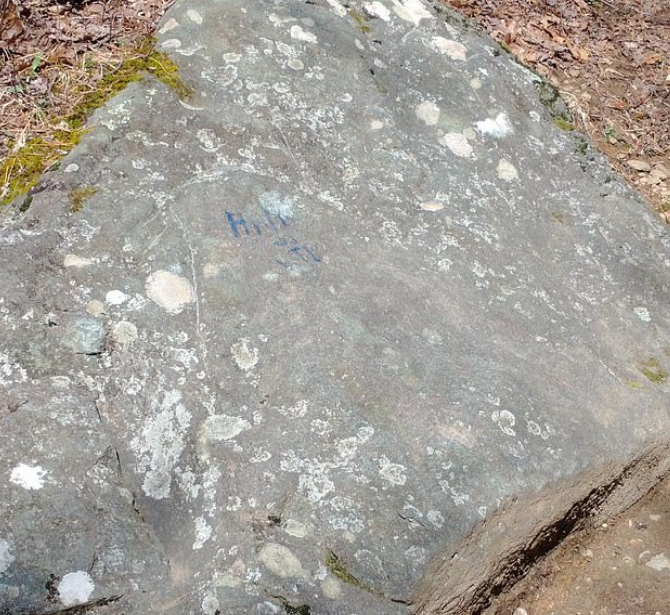
- Details
- By Native News Online Staff
The U.S. Forest Service law enforcement is investigating the defacing of pre-European contact petroglyphs done in Track Rock Gap, located in Chattahoochee National Forest in northern Georgia.
The petroglyphs are historic pieces of art that were carved by Creek and Cherokee over 1,000 years ago, according to the U.S. Forest Service.
When the vandalism took place is not known, but the defacing was announced on the U.S. Forest Service Facebook page on Monday.
“It’s one of the most significant rock art sites in the Southeastern United States and the only such site located on public land in Georgia,” the post stated. The post has since been removed because of the investigation.
 Rock defaced with paint. (U.S. Forest Service)
Rock defaced with paint. (U.S. Forest Service)
U.S. Forest Service spokesperson Steven Bekkerus said five boulders had scratches and two were painted.
“Petroglyphs are an irreplaceable part of the nation's heritage,” Bekkerus said.
Petroglyphs are protected by the Archaeological Resources Protection Act. The Muscogee Creek and Eastern Band of Cherokee Indians work closely with the U.S. Forest Service to preserve the Track Rock Gap petroglyphs.
“The Eastern Band of Cherokee Indians is sad and frustrated to learn that Track Rock had been vandalized. These are special and rare sites," the tribal nation’s Tribal Heritage Preservation Office said in a statement. "They are special sites for the Eastern Band of Cherokee Indians and for all people as part of the Heritage of this region. Whether through ignorance or malice — the result is irreparable damage to a unique site that connects us directly to the people of the past."
Petroglyphs were carved by various tribes throughout the United States on rocks. The pictures sometimes told origin stories and sometimes served as other forms of communication.
According to the U.S. Forest Service website, “Track Rock Gap is the location of a series of rock carvings, or petroglyphs, made by Native Americans in Union County, Georgia on soapstone boulders. There are over a hundred carvings of a wide range of figures. It’s one of the most significant rock art sites in the Southeastern United States and the only such site located on public land in Georgia.”
Track Rock Gap is located about 90 miles northeast of Atlanta.
More Stories Like This
Native News Weekly (August 25, 2024): D.C. BriefsUS Presidents in Their Own Words Concerning American Indians
Native News Weekly (December 7, 2025): D.C. Briefs
Why We Report: Chez Oxendine Shares His Story for Native News Online’s Year-End Campaign
New Amnesty International Report Details Torture, Overcrowding at Krome and ‘Alligator Alcatraz’
Help us defend tribal sovereignty.
At Native News Online, our mission is rooted in telling the stories that strengthen sovereignty and uplift Indigenous voices — not just at year’s end, but every single day.
Because of your generosity last year, we were able to keep our reporters on the ground in tribal communities, at national gatherings and in the halls of Congress — covering the issues that matter most to Indian Country: sovereignty, culture, education, health and economic opportunity.
That support sustained us through a tough year in 2025. Now, as we look to the year ahead, we need your help right now to ensure warrior journalism remains strong — reporting that defends tribal sovereignty, amplifies Native truth, and holds power accountable.
 The stakes couldn't be higher. Your support keeps Native voices heard, Native stories told and Native sovereignty defended.
The stakes couldn't be higher. Your support keeps Native voices heard, Native stories told and Native sovereignty defended.
Stand with Warrior Journalism today.
Levi Rickert (Potawatomi), Editor & Publisher

